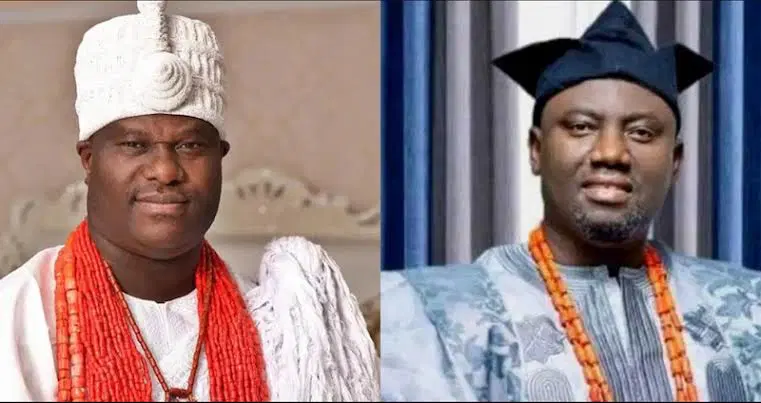Ooni vs Alaafin: Who wields the higher authority in Yorubaland?

Ooni vs Alaafin: A centuries-old rivalry of spiritual primacy and political power resurfaces in Yorubaland.
The Yoruba cultural landscape is once again stirred by the age-old supremacy debate between the Ooni of Ife and the Alaafin of Oyo. The latest flashpoint arose in August 2025 when the Alaafin demanded that the Ooni revoke a newly conferred “Okanlomo of Yorubaland” title, arguing that only Oyo’s throne can bestow honors spanning the entire Yoruba nation. This dispute has revived questions that date back centuries: who is truly higher in authority between the two foremost Yoruba monarchs? The answer lies in a careful balance of history, tradition, and modern law.
The Historical Core: Two Peaks of Yoruba Authority
In Yoruba tradition, Ile-Ife is regarded as the cradle of civilization. The Ooni, as Arole Odùduwà, holds a unique spiritual authority over all Yoruba monarchs. His primacy is rooted in heritage, identity, and religion rather than political control. By contrast, the Alaafin’s power stemmed from the military and political might of the Oyo Empire, which dominated large parts of West Africa between the 17th and 18th centuries. While the Ooni commanded spiritual reverence, the Alaafin embodied political hegemony. The Yoruba world thus recognized two different kinds of supremacy: one spiritual, the other political.
Colonial and Post-Colonial Recalibration
British indirect rule reshaped Yoruba kingship without granting universal sovereignty to any monarch. However, the colonial administration and later regional governments recognized the Ooni as the symbolic head of councils, reflecting his spiritual seniority. The Alaafin, meanwhile, retained immense influence through Oyo’s imperial legacy, which continued to command respect well into Nigeria’s independence.
Legal Authority in Modern Nigeria
Today, authority over chieftaincy matters is determined not by imperial history but by state law. In Oyo State, the Alaafin traditionally chairs the Council of Obas, a position recently restored as permanent. In Osun State, the Ooni is the permanent chairman of the Council of Obas, reflecting his primacy in Ife. Nigerian law does not grant any monarch pan-Yoruba sovereignty. There is also no Supreme Court ruling that confers exclusive authority on the Alaafin to give “Yorubaland-wide” titles. Instead, each state defines the powers of its royal councils within its legal framework.
The Current Dispute
The latest quarrel is best understood as a clash of symbols, not enforceable law. The Alaafin invokes Oyo’s imperial past to argue for exclusive authority, while the Ooni and legal voices emphasize his spiritual preeminence and the state-based nature of chieftaincy law. In practice, neither monarch possesses absolute power over all Yoruba territories, and any “Yorubaland” title remains symbolic rather than legally binding.
Who wields the higher power between Oone and Alaafin?
The debate over supremacy between the Ooni and the Alaafin cannot be reduced to a simple hierarchy. Historically, the Ooni represents spiritual leadership, while the Alaafin symbolizes political might. Legally, however, both monarchs are bound by their state jurisdictions, with no one throne holding all-Yoruba authority. The supremacy battle, therefore, reflects a rivalry of heritage and symbolism more than law, underscoring the complexity of Yoruba kingship in the modern age.

